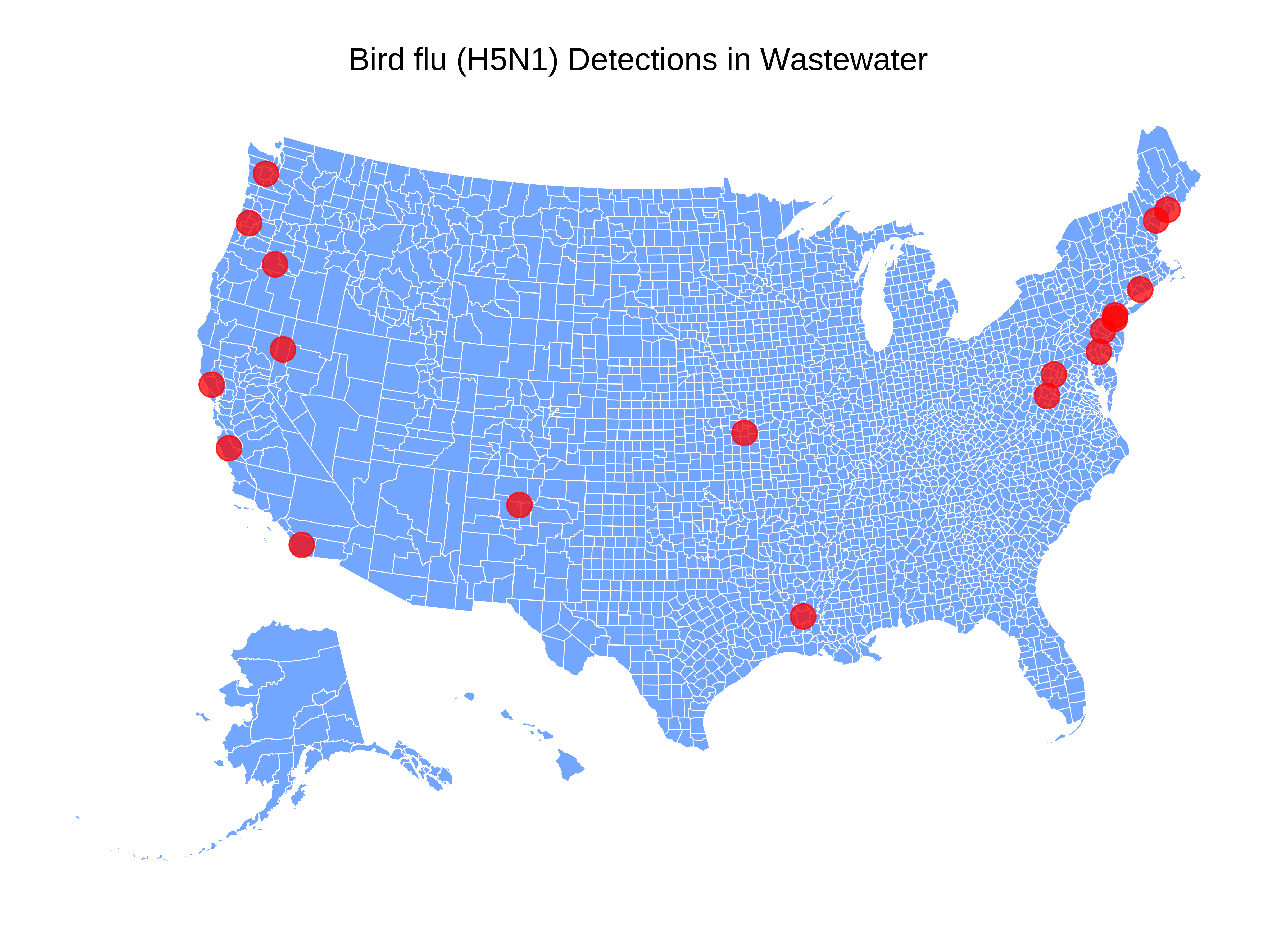
Blog
Beneath the Surface: The Innovative Role of Wastewater Data in the Fight Against the Opioid Epidemic

May 7, 2024
In recent years, public health has faced unprecedented challenges due to the rapidly evolving landscape of substance use, particularly with the rising prevalence of synthetic opioids and novel psychoactive substances. New substances emerge, use patterns shift, and traditional data sources often lag behind.
This is where wastewater epidemiology steps in as a game-changer. By analyzing wastewater samples with advanced analytics, we can gain valuable, real-time insights into community drug use. Traditional data sources, like hospital admissions or death certificates, can be delayed or incomplete. Wastewater data offers a more comprehensive picture.
Biobot’s High Risk Substances team recently partnered with Mathematica and the Washington/Baltimore High Intensity Drug Trafficking Area (W/B HIDTA) program to publish a joint research brief exploring how wastewater data can complement and enhance more traditional data sources such as W/B HIDTA’s ODMAP program, which tracks law enforcement and EMS overdose calls. Here’s a look at what we found:
- Early Warning for Emerging Threats: The research found that xylazine, a dangerous veterinary tranquilizer increasingly co-used with opioids, was detected in the wastewater data weeks before overdoses involving the drug were reported, giving communities crucial time to prepare and warn residents of this emerging threat.
- Predicting Overdoses: An exciting outcome of the research was the use of advanced analytics to identify trends in wastewater data that might signal an increased risk of overdoses. Examining law enforcement and EMS overdose calls in combination with wastewater data and advanced analytics, overdoses could be predicted 71-100% of the time.
- Evaluating Drug Policy: Wastewater data can be used to assess the effectiveness of harm reduction strategies, like the recent decriminalization of fentanyl test strips in Kentucky. The analysis suggests a decrease in fentanyl use after the policy change, offering early evidence of the potential for wastewater data in the evaluation of evaluate programs targeting substance use and related harms.
One area we are particularly excited about is the potential for wastewater to fill gaps in existing substance use datasets, particularly in rural communities where data and resources can be sparse. Rural communities are also disproportionately impacted by the opioid epidemic, driven by limited access to healthcare services, social and economic challenges, and fewer resources for addiction treatment and prevention. In these areas, wastewater can be an even more powerful tool in the fight to prevent overdose deaths.
Our work to unlock the power of the sewers in the fight against the opioid epidemic, through initiatives like Biobot’s Partnership with NIDA, is only just beginning. As communities across the U.S. begin to leverage opioid abatement funds to support wastewater monitoring efforts, we hope even more communities can realize the benefits of these data. The research brief underscores that this type of groundbreaking public health monitoring system is not just about detection; it’s about proactive intervention.
Wastewater monitoring and advanced analytics have the potential to turn the tide against high risk substance use, helping protect communities and improve public health outcomes in an era where traditional data sources are no longer sufficient.
Written by Jana Epstein
Jana Epstein is the product manager for Biobot's chemistry applications. With a passion for public health and an unconventional appreciation for sewage's hidden gems, she's on a mission to turn muck into meaningful public health solutions.





